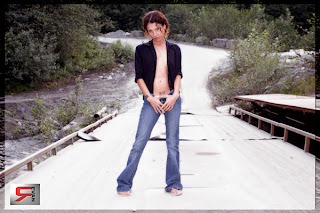Death is a private matter. A person’s last moments are their most personal—time to say good-bye, to make amends and to savour the life flashing before dimming eyes. But modern media has made what should be reserved for family and loved ones a public event.
Then again, death speaks loudly. If people need to make a statement, or shock others to action, then showing the reality of human demise is the way to go. Watching someone die on TV or the Internet can be like looking into a possible future. People ask themselves: Could that be how it will end for me?
People watch simulated death all the time on movies and video games. They are being desensitized with every gory scene they view or every virtual bludgeon they give to Xbox opponents. But is this the way people prepare themselves for their own impending doom?
Throughout history blood sport has been hailed as the ultimate entertainment. Romans, Mayans and many other cultures show that people love to watch gladiators slice through a slave or see a crowd stone a criminal—people have been watching people die since people were people.
So, how come it now seems so wrong to publicly present a person’s last strangled breath? Wasn’t that prime entertainment back in the day? Death still lives on as entertainment in films such as Faces of Death and Traces of Death.
To stress an issue, to prove a point or to get some answers, broadcasting death is the way to go—it is the ultimate emphasis. One only needs to look at this past month to see how death can turn incidents into atrocities.
In Japan, there have been incidents of dolphin culling. But after seeing the video highlighted by Hayden Panettiere, with the ocean turning violently crimson with each wave and each mammalian life taken, people are now aware that it is an atrocity of dolphin slaughter taking place, not just an incident.
The same is true for the taser incident at the Vancouver International Airport. Before the video came out, the public thought of it as just another tasering incident. But the film shows otherwise, and the strangled last breaths of the dying man reveal even more.
People relate to death because it happens to everyone—death is human. But is viewing death humane?
Besides a few cases of extroverted suicides, living creatures don’t usually go somewhere public when they know they are about to die. A family pet will go lay in a corner, a terminal patient will attempt to go home—as common as it is, death is still a mysterious thing.
But some living things do not get the dignity of a secluded death. Robert Dziekanski, the Polish immigrant who was tasered YVR, did not get that luxury. Neither did Eugene Armstrong, an American whose decapitation was posted on the internet.
It is hard to choose between respect for the dead and knowledge for the living. In October of this year, a 405-year-old clam was dredged from the bottom of the sea, which ironically died while scientists were counting its rings to determine its age.
Death finds everyone—it just matters if there is a camera around when it does. And with cameras posted everywhere from the street to cell phones, there’s a good chance someone will record your last breath.




